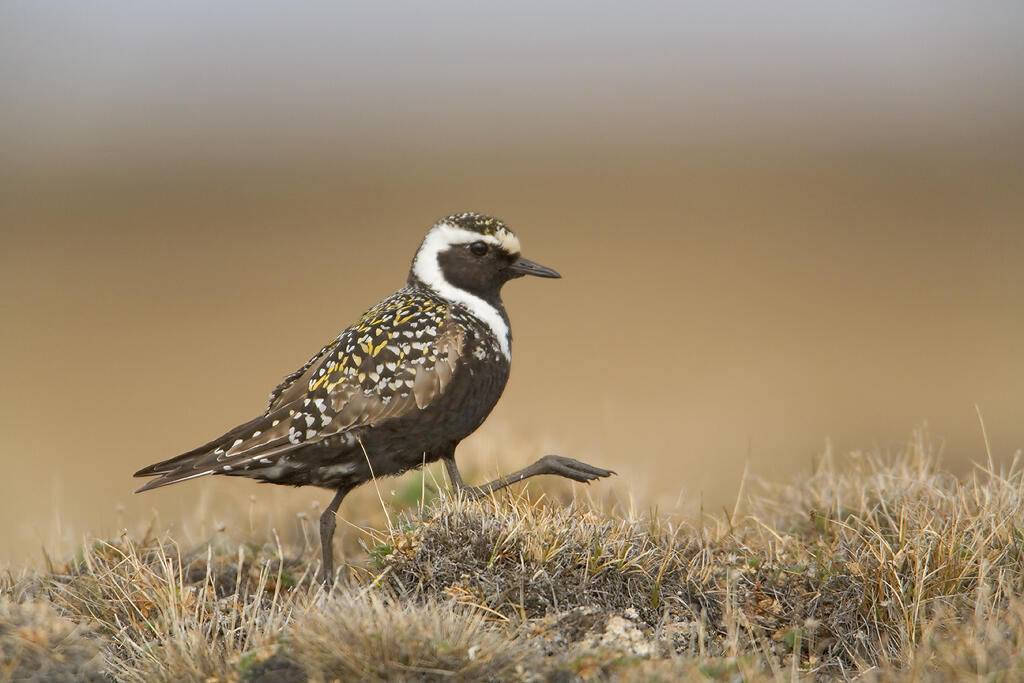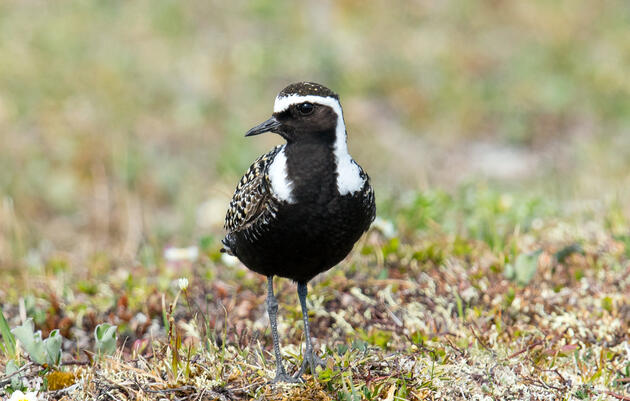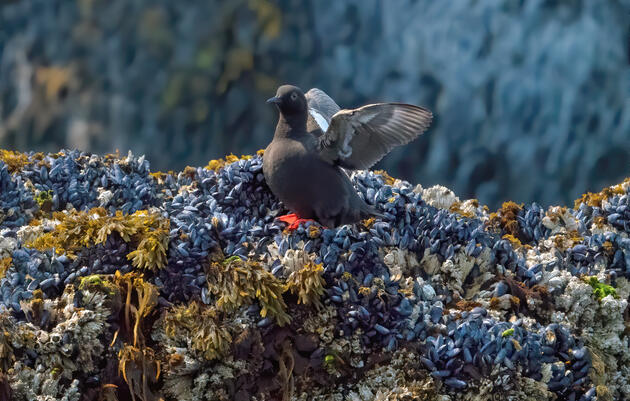
We are happy to announce a new project: Tullik’s Odyssey: The American Golden-Plover Southbound Migration Project—a collaboration between Audubon Alaska, Audubon's Boreal Conservation Program, Audubon Americas, Manomet, Inc., U.S. Fish and Wildlife Service-Alaska Region, and Atlantic Flyway Shorebird Initiative.
In June 2023, eight American Golden-Plovers (Pluvialis dominica) were equipped with 3.5-gram PinPoint GPS Argos tags (the world’s smallest GPS Argos tags) at Teshekpuk Lake Special Use Area within the National Petroleum Reserve-Alaska. Fitting these eight individuals with GPS tags is the first step of a project that will highlight the importance of migratory bird habitat by following the southbound route of the American Golden-Plover—a medium-sized, black-bellied wading bird.
The species starts in the Alaskan Arctic, courses through northern Canada to the northeastern United States, darts across the Atlantic Ocean, and winds up in Argentina. This means the American Golden-Plover makes one of the longest migration journeys of any bird.
“Migratory shorebirds challenge and inspire us with their long-distance journeys across the Americas,” says River Gates, Pacific Shorebird Conservation Initiative Coordinator with National Audubon Society. “To help protect and manage the places they need to thrive, collaborative partnerships have been the driving force for leveraging the human potential and commitment to protecting migratory shorebirds.”
This summer, during the post-breeding period, the marked birds will be possibly detected in the foothills of the Brooks Range or the Foxe Basin Peninsula in Canada. In late summer, the focus may shift to Hudson Bay and spots in New England. And from August through December, we may follow along through the upper Amazon in Brazil and coastal grasslands in Uruguay.
But the public may follow along at TulliksOdyssey.org—which will feature interviews, tracking data, and content focusing on the species’ post-breeding locations, staging areas, and stopover sites, and how the conservation of those places is vital for transoceanic migrations.
The American Golden-Plover is a focal species for the Atlantic and Midcontinent shorebird conservation initiatives. By tracking these eight individuals, Audubon Alaska and its partners hope to underscore important work, like the Program for Regional and International Shorebird Monitoring (PRISM), an international collaborative science and bird population estimate and trend monitoring program.
On the conservation side, threats like oil and gas development, human disturbance, and climate change to the Arctic tundra—an essential region for breeding and migration—will be spotlighted with storytelling and social media campaigns. This will tie into highlighting the accelerating decline of North America’s shorebirds, and how urgent conservation solutions are needed.








